+Search query
-Structure paper
| Title | Structural insights into photosystem II supercomplex and trimeric FCP antennae of a centric diatom Cyclotella meneghiniana. |
|---|---|
| Journal, issue, pages | Nat Commun, Vol. 14, Issue 1, Page 8164, Year 2023 |
| Publish date | Dec 9, 2023 |
 Authors Authors | Songhao Zhao / Lili Shen / Xiaoyi Li / Qiushuang Tao / Zhenhua Li / Caizhe Xu / Cuicui Zhou / Yanyan Yang / Min Sang / Guangye Han / Long-Jiang Yu / Tingyun Kuang / Jian-Ren Shen / Wenda Wang /   |
| PubMed Abstract | Diatoms are dominant marine algae and contribute around a quarter of global primary productivity, the success of which is largely attributed to their photosynthetic capacity aided by specific ...Diatoms are dominant marine algae and contribute around a quarter of global primary productivity, the success of which is largely attributed to their photosynthetic capacity aided by specific fucoxanthin chlorophyll-binding proteins (FCPs) to enhance the blue-green light absorption under water. We purified a photosystem II (PSII)-FCPII supercomplex and a trimeric FCP from Cyclotella meneghiniana (Cm) and solved their structures by cryo-electron microscopy (cryo-EM). The structures reveal detailed organizations of monomeric, dimeric and trimeric FCP antennae, as well as distinct assemblies of Lhcx6_1 and dimeric FCPII-H in PSII core. Each Cm-PSII-FCPII monomer contains an Lhcx6_1, an FCP heterodimer and other three FCP monomers, which form an efficient pigment network for harvesting energy. More diadinoxanthins and diatoxanthins are found in FCPs, which may function to quench excess energy. The trimeric FCP contains more chlorophylls c and fucoxanthins. These diversified FCPs and PSII-FCPII provide a structural basis for efficient light energy harvesting, transfer, and dissipation in C. meneghiniana. |
 External links External links |  Nat Commun / Nat Commun /  PubMed:38071196 / PubMed:38071196 /  PubMed Central PubMed Central |
| Methods | EM (single particle) |
| Resolution | 2.72 - 3.48 Å |
| Structure data | EMDB-35987, PDB-8j5k: EMDB-36054, PDB-8j7z: EMDB-37267, PDB-8w4o: EMDB-37268, PDB-8w4p: |
| Chemicals |  ChemComp-OEX:  ChemComp-FE2: 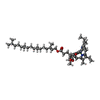 ChemComp-CLA:  ChemComp-PHO: 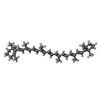 ChemComp-BCR: 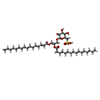 ChemComp-SQD: 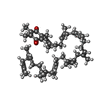 ChemComp-PL9: 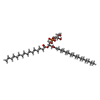 ChemComp-LHG: 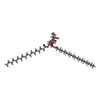 ChemComp-LMG:  ChemComp-CL: 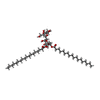 ChemComp-DGD: 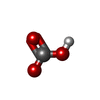 ChemComp-BCT:  ChemComp-HEM: 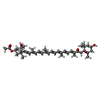 ChemComp-A86: 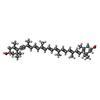 ChemComp-ET4:  ChemComp-DD6:  ChemComp-KC2: 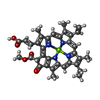 ChemComp-KC1: |
| Source |
|
 Keywords Keywords | PHOTOSYNTHESIS / PSII-FCPII supercomplex / Cm-FCP-trimer / PSII-FCPII |
 Movie
Movie Controller
Controller Structure viewers
Structure viewers About Yorodumi Papers
About Yorodumi Papers











 stephanocyclus meneghinianus (Diatom)
stephanocyclus meneghinianus (Diatom)